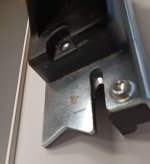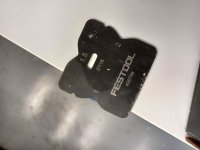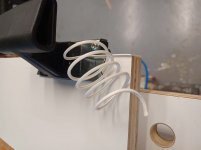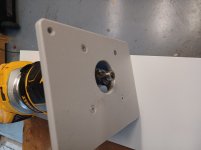Hi!
I am starting to use the Conturo and have a question about trimming edge banding. Right now, I am using a Makita trim router on a DIY vertical. Always worked pretty well with hardwood strips edge banding but I had no access with edge banding applied with the Conturo. The bit gums up pretty quickly. How does the MFK avoid this problem?
I already reduced the glue amount substantially...
Thanks!
I am starting to use the Conturo and have a question about trimming edge banding. Right now, I am using a Makita trim router on a DIY vertical. Always worked pretty well with hardwood strips edge banding but I had no access with edge banding applied with the Conturo. The bit gums up pretty quickly. How does the MFK avoid this problem?
I already reduced the glue amount substantially...
Thanks!




